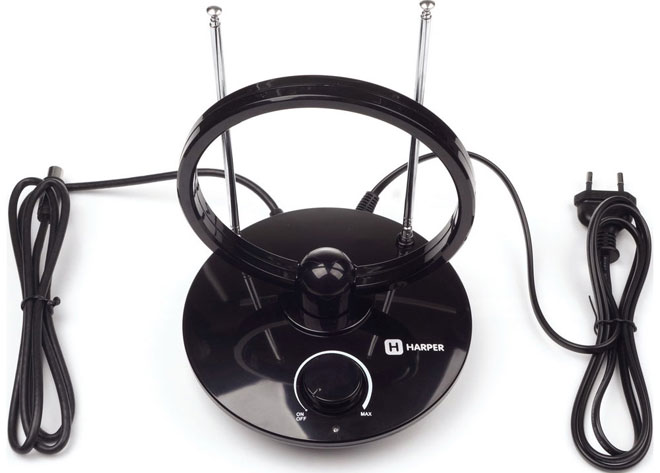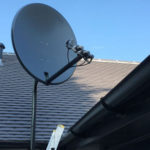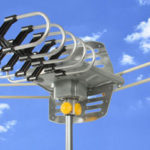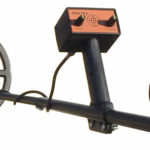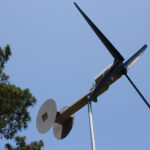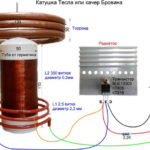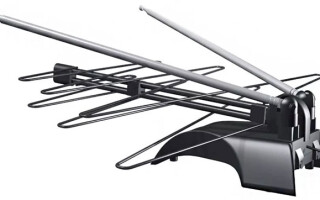Sometimes the TV antenna fails at the most inopportune moment, or it simply is not at hand. For example, during a trip to the cottage. In this case, there is a question of how to make an antenna for the TV with your own hands from what is on hand.
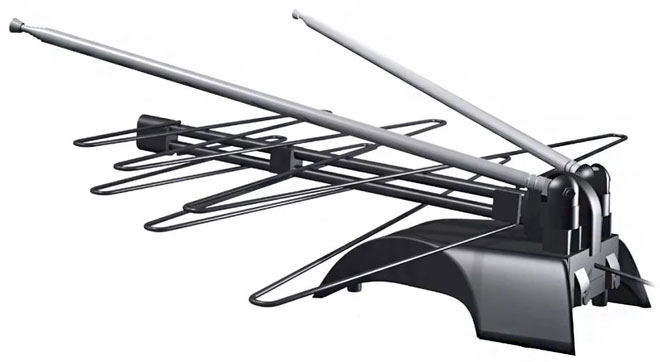
With a homemade transmitter you can watch a limited number of channels. And the reception may be of lower quality than that of a purchased device. Nevertheless, knowing how to make your own antenna from improvised means can be useful. An antenna can be as simple as it is complex. The device will be able to receive almost all types of broadcasting.
Contents
Antenna types
Before proceeding to make a TV antenna with your own hands, it is worth to understand the types and technical characteristics of TV receivers.
Depending on the place of installation, there are indoor and outdoor TV receivers. Devices for the premises are effective only in areas of confident signal reception. They are not suitable for country TVs. For rural areas and areas remote from the TV repeater, outdoor receivers are used.
According to the type of signal amplifier TV receivers can be active and passive. Passive type constructions receive and amplify pulses due to their own geometry. They do not need power supply, do not introduce their own interference and noise in the signal they receive. It is easiest to make a passive type antenna yourself.
Active devices are equipped with a signal amplifier, which is powered from the mains. The active amplifier itself creates interference and distortion in the area of confident reception in the case of selecting too powerful or low-quality device.
Broadcasting is carried out on meter or decimeter waves. To receive only VHF or UHF broadcasts, band receivers are best suited. For example, for digital terrestrial television DVB-T2 in our country only the decimeter band is used.
The log-periodic, or omni-wave, TV antenna can receive both meter and decimeter waves. It is a broadband design with 10 vibrators. The logoperiodic device corresponds to a 3-4 element omni-wave antenna in terms of gain.
The operating frequencies are limited to the largest and smallest vibrator in the receiver. It is well matched to the feeder. Its gain does not change, then no symmetering or matching devices are required to connect it to the feeder.
A cable with a resistance of 75 ohms enters the bottom tube, exits at the end (which is directed toward the TV center) and connects the braid to the end of the bottom tube, and the core to the end of the top tube.
Externally and by the principle of operation, a logoperiodic TV antenna is a few channel-wave devices connected together. And each of them has its own vibrator, reflector and director. When a signal arrives, the vibrators closest in size to half its wavelength are excited. Such TV antennas are used to receive both digital and analog broadcasts.
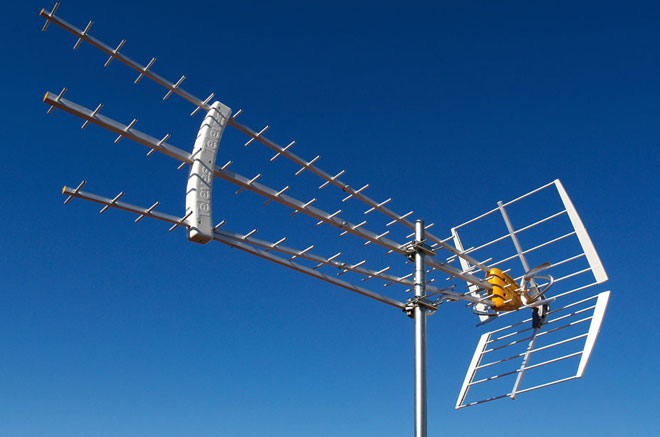
The wave channel type receiver has the simplest design, which can be quickly assembled from simple and accessible materials. It receives analog TV signal near the TV tower and digital - outside of large settlements, where there is little interference.
We use beer cans
Antenna for villas with their own hands from beer cans - the simplest and most accessible design of the passive type. It can be made quickly and in the absence of basic skills. In this case it perfectly copes with the reception of decimeter broadcasting bands.
To build an antenna out of beer cans you will need:
- a cable of sufficient length;
- Aluminum cans (for the simplest design is enough 2);
- 2 screws or self-tapping screws;
- plug (F-connector) to connect the cable to the TV;
- duct tape or duct tape;
- a base made of wood or plastic for attaching the cans (you can use wooden clothes hangers).
The diagram of the antenna is simple:
- Each can is attached with duct tape or tape to a pin-base at a distance of 7 cm from each other.
- The cable is stripped on one side. Unwire and fasten to the rings of the cans or to the screwed-in self-tapping screws. It can also be soldered. A plug is attached to the free end.
This simplest design is suitable for installation both in the room and outdoors. When used outdoors, the cans are covered with a large plastic container with a cut-off neck and bottom. The cable is pulled through a hole made on the side, which can be sealed with boiling water. The ready-made receiver is connected and tuned through the automatic channel search.
You can make an analogue of a satellite dish with your own hands. To this end, use a simple umbrella. You will also need:
- aluminum foil;
- copper cable;
- 1 tin can;
- amplifier and power supply to it.
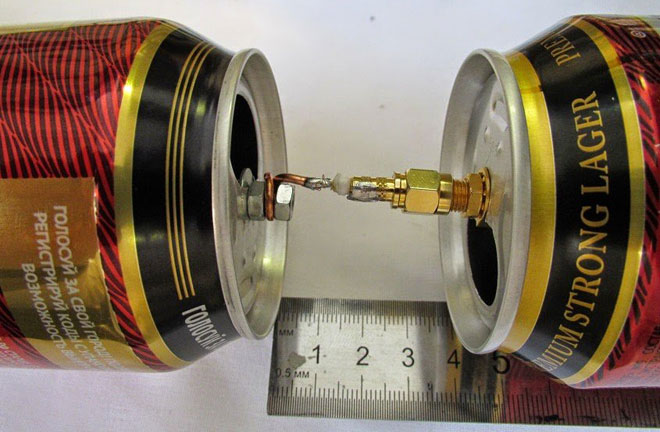
Procedure:
- Measure the segments of the umbrella between the spokes and cut from foil elements corresponding to these dimensions. Sew them to the dome of the umbrella, covering its entire interior.
- In the focus of the metal grid install the receiver of the TV signal. The amplifier will serve as a wire, from which the previously removed 4 cm of braid, and the cable shield, protecting against interference.
- From an aluminum can cut an oval. In the center of it make a hole through which to pass the bare wire and solder the contact. To protect against oxidation and corrosion, plasticine covers the connection area.
- The amplifier is powered through the cable.
- Attach the receiver to the handle of the umbrella with duct tape so that it does not touch the metal. This will prevent interference and distortion. The connection should be sealed with plasticine.
- The power supply is placed next to the TV, and the antenna is turned towards the repeater.
- Channels are set by controlling the dish until the best signal is obtained.
This antenna works best if the tower is no further away than 35 km.
We use the wire
One more simple construction - a self-made antenna from a wire. You can use copper or brass wire to make it. These materials are resistant to oxidation.
The wire should be stripped from the ends of the insulation. One of them is connected to the TV, and the other to the radiator of the heating system. The pipe is led to the roof - it will work as a signal amplifier. Such an antenna will be able to receive no more than 5 signals. The wire can be stretched to the balcony and fastened on a clothesline.
You can also make a TV antenna from a wire in another way. It will require:
- 2 pieces of copper wire 3-4 mm wide and 1.8 m long;
- A plywood or metal plate measuring 15 cm by 15 cm;
- amplifier (old decimeter amplifiers can be used);
- power drill;
- TV cable;
- Iron pipe or fittings to make the mast;
- bolts.
This copper wire antenna is assembled as follows:
- Make catchers, for which bend the wire in the form of 2 rhombuses with sides of 45 cm. This is the optimum frame length for such a device.
- Obtained rhombuses fix on the base. To do this, at the attachment points, flattening the wire, drill holes and screw in screws.
- If a metal plate is used as a base, a welding machine can be used to attach the trap.
- In the center we fix the amplifier and connect the cable to it.
As a mast here is easiest to use a metal pipe, which can simply be dug into the ground or attached to any suitable support. The antenna is attached to the top of the mast, and the cable is pulled through it. The entire structure is painted to protect against corrosion.
Another popular copper wire TV receiver that you can make yourself is a small antenna with an unusual "butterfly" shape. For outdoor use, such a device is made of wire 2-4 mm thick, for indoor - 2 mm and thinner.
To receive TV channels make a frame. The length of the frame - 500 mm, width - 200 mm. It is twisted so that there are 2 equal triangles, which are separated with wire cutters and soldered to the cable, leaving a distance of 14 mm between the tops. On the other end of the cable attach the plug. The design is taped or duct tape to the material with dielectric properties - wood, ebonite, plastic.
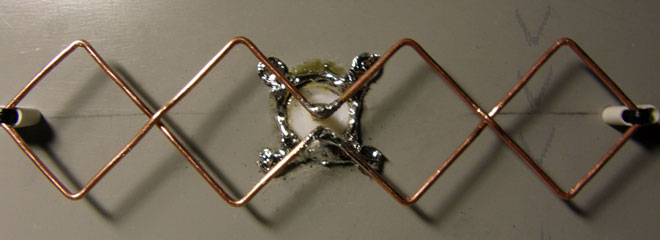
Home digital HDTV device
A powerful antenna for TV, capable of receiving a 490 MHz signal, is made from a transformer, which is better to buy, because it will not be easy to make it yourself. You will also need:
- cardboard;
- duct tape:
- foil;
- stapler;
- glue.
To make a TV receiver, a scheme is used, according to which all the parts are cut out of cardboard. The elements are glued with foil, folded and trimmed. The template and the scheme are best found in advance through a search engine and printed out on a printer or redrawn from a printed publication.
First you need to make a reflector about 35 cm long and glue it with one side of the foil. In the middle, 2 rectangles of the same size are cut out for attaching the catcher.
The antenna is assembled from the prepared parts. With 35 mm from the reflector, the elements of the "butterfly" shape are glued to the plate. They can be attached using a stapler. In the middle of each of these elements make a hole for the cable, to which the transformer is connected and attach the plug.
Apartment version
You can make an antenna for indoor use in any of the above ways.
Another simple option at home is made as follows.
A simple frame indoor antenna is made with your own hands from copper wire or cable with foil in the winding. The device not only receives TV channels, but also serves as a selective filter against interference.
To calculate the size of the loop you need to know the frequency of the wave for the region. The length of the loop will be equal to the product of the coefficient (300 units) by the average frequency range.
Cut off the necessary amount of wire or cable, trim the edges if necessary. Twist a loop out of it and solder the TV cable leading to the receiver. Connect the plug to it.
The design can be suspended or mounted on a stand. This simple device is most effective for digital television when accurately calculated.
A reliable device for the home is the diamond-shaped antenna. It is the simplest representative of zigzag television receivers. To improve reception, it is equipped with capacitive inserts and reflector.
The device is assembled from plates or tubes 1-1.5 cm wide made of brass, copper or aluminum. To make the capacitive inserts use foil, tin or metal mesh, which are soldered around the perimeter. The cable is laid from the center and on one side, avoiding sharp bends. It should not leave the limits of the frame.
